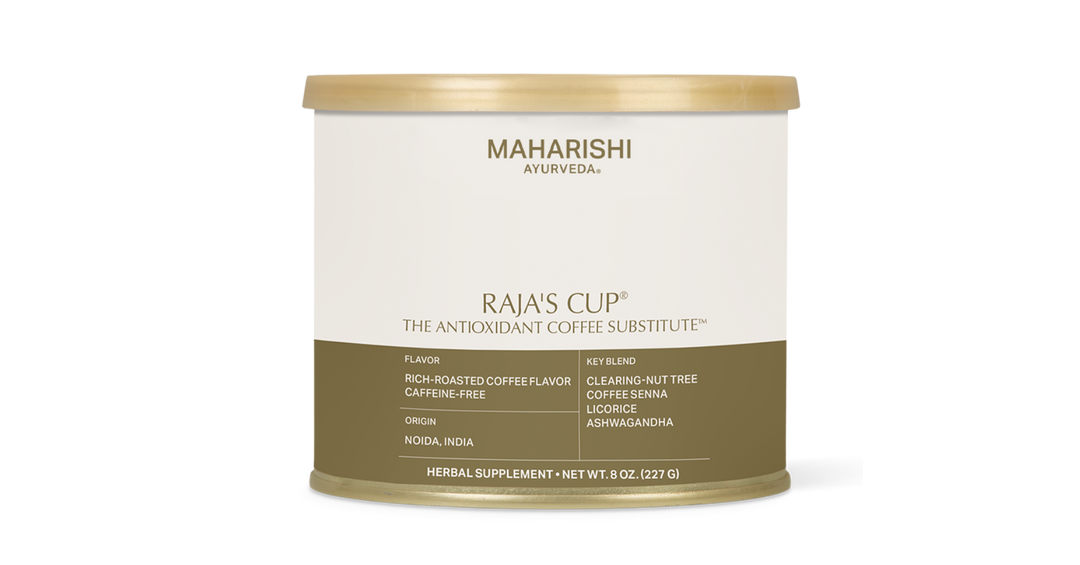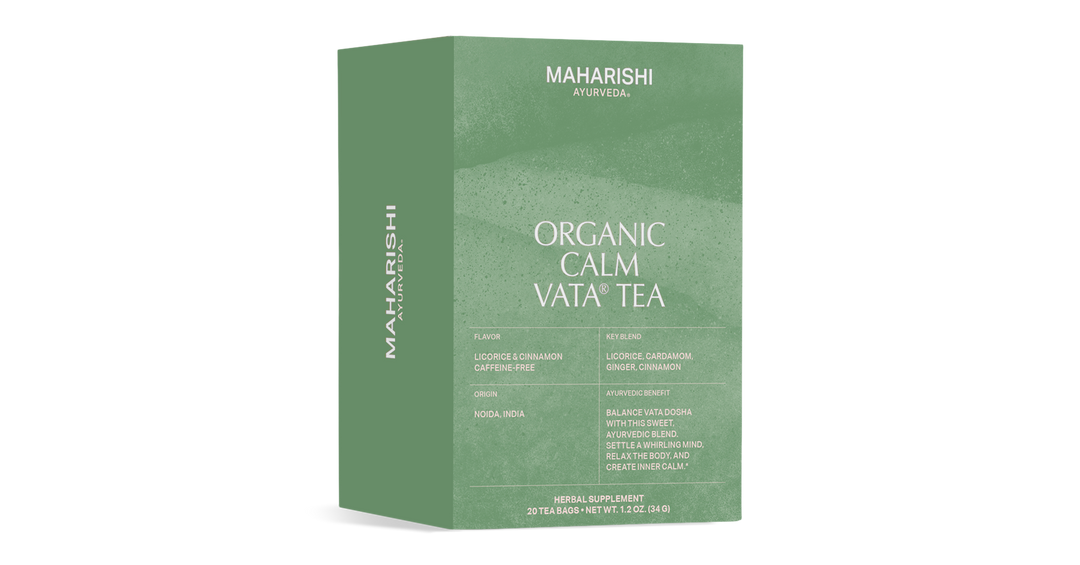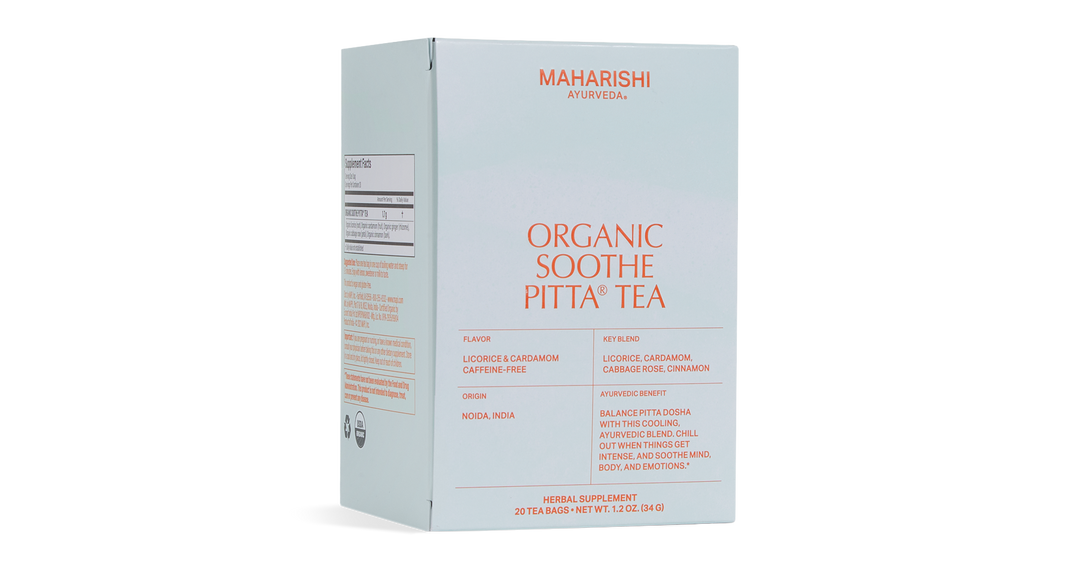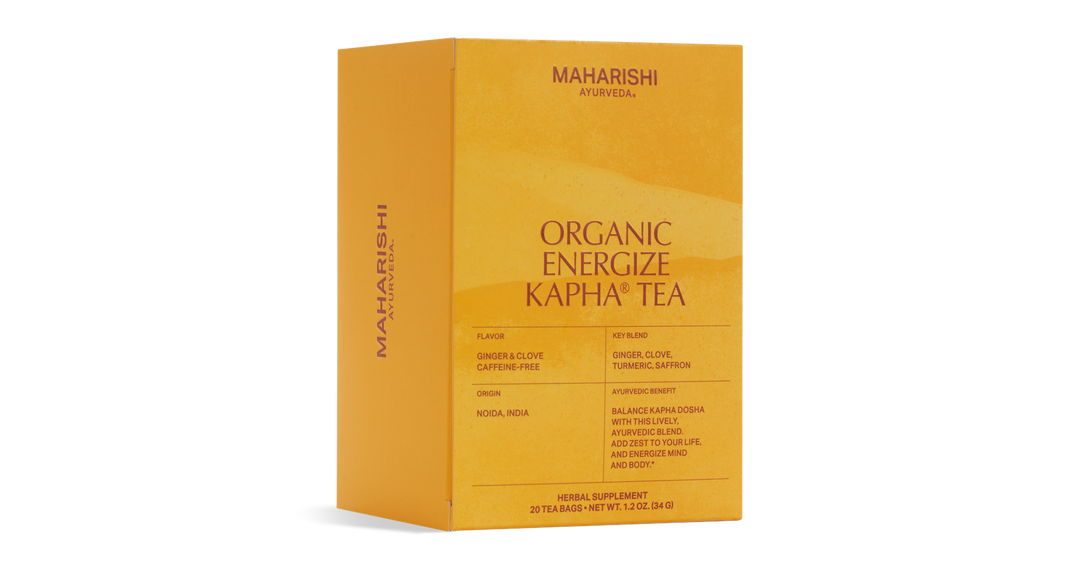A comforting, well-spiced cup of chai. A fragrant lemongrass blend. There’s nothing like a warm pot of tea to soothe the senses and press pause on the daily hustle.
Generally speaking, Ayurveda recommends caffeine-free, herb-and-spice blends (or tisanes) rather than high-caffeine teas, which can leave you feeling jittery and scattered. That being said, different dosha types respond differently to caffeine; some people actually benefit from a little boost now and then!
As with everything, a little bit of moderation goes a long way. If you’re a fan of black, green, and white tea, here are some helpful Ayurvedic tips to keep in mind when sipping.
Know Your Dosha
Did you know that the way your body responds to caffeine has a lot to do with your dosha, or mind-body type? People with a predominance of Vata dosha tend to be the most sensitive to caffeine, which is a nervous system stimulant. If you’re a Vata type, herbal teas are your friend, along with lower-caffeine blends and shorter steeping times. Pitta types can tolerate caffeine better, though too much can leave them irritable. Easygoing Kapha types are best suited to a little caffeine now and then.
Use Balancing Botanicals
In India, chai—a milky tea steeped with spices and sugar—is more than just a delicious drink. It also has digestive benefits, thanks to warming ingredients like ginger, cloves, cinnamon, and cardamon. In fact, cardamom actually helps neutralize the effects of caffeine, making it easier on your nervous system (coffee drinkers, take note).
Other types of teas can also include ingredients that bring balance. Sweet, floral blends containing ingredients like rose petals are great for Pitta types, and warming spices help balance Vata and Kapha.
Check the Caffeine Level
All caffeinated teas are not created equal! While black, green, and white teas do contain some caffeine, green tea has less than black tea, and white tea has even less than green tea.
Green tea also contains theanine, an amino acid that can have a calming effect (depending on your individual constitution—see how you feel after that tasty cup of matcha). It’s also worth noting that all teas have far less caffeine than coffee. So if you’re trying to cut back on coffee as part of your Ayurveda journey, caffeinated tea can be a delicious compromise.
Drink It Earlier in the Day
We’ve all been there: one delicious cup of Earl Grey leads to another (and another) throughout the day, and next thing you know it you’re staring at the ceiling at 3 a.m. To avoid the telltale tossing and turning that sometimes accompanies too much caffeine, try to drink caffeinated teas in the morning—ideally during Kapha time, from 6–10 a.m.—and cut yourself off after noon.
Favor a Sattvic Diet
In Ayurveda, all foods can be categorized into three different basic groups:
-
sattvic (pure, promoting spiritual growth)—examples include whole foods, fresh produce, rice, ghee, and dairy.
-
rajasic (stimulating, awakening desire)—examples include garlic, onions, chili peppers, chocolate, and caffeinated beverages.
- tamasic (heavy, promoting dullness)—examples include meats, leftovers, and overly processed “junk” foods like potato chips.
Ayurveda generally recommends favoring a sattvic diet, but it’s certainly okay to enjoy foods from the rajasic and tamasic list every now and then, depending on how you tolerate them. It’s all about balance. If you largely follow a sattvic diet rich in whole grains, legumes, healthy fats, and fresh produce, a bit of intentionally eaten chocolate, meat, or caffeine might even do you some good, depending on your body’s needs.
Follow a Good Ayurvedic Routine
A balanced, healthy routine, or dinacharya, is one of the cornerstones of good health in Ayurveda. This includes all the Ayurvedic basics:
- arising early (ideally before 6 a.m., when Kapha’s morning cycle kicks in)
- gently scraping your tongue of ama (toxins) in the morning
- doing your abhyanga (daily massage with warm oil)
- practising meditation and yoga
- getting enough rest and exercise to stay balanced throughout the day
- hitting the hay around 10 p.m. during Kapha’s evening cycle.
Check in with Yourself
The next time you drink a caffeinated cuppa, note how you feel in the moment, throughout the day, and later at night. Do you feel clear
and alert, or scattered and frazzled? Are you sleeping soundly or having a hard time falling asleep and waking up in the night? If you’re feeling overstimulated, that’s a good clue that it’s time to cut back. But try not to strain.
Remember: the guidelines of Ayurvedic living and eating are simply that: guidelines. The aim of Ayurveda is to help you live more in tune with your body’s needs. Ultimately, you’re the only one who can make that call. Here’s to your health!
Discover Ayurvedic drink recipes






